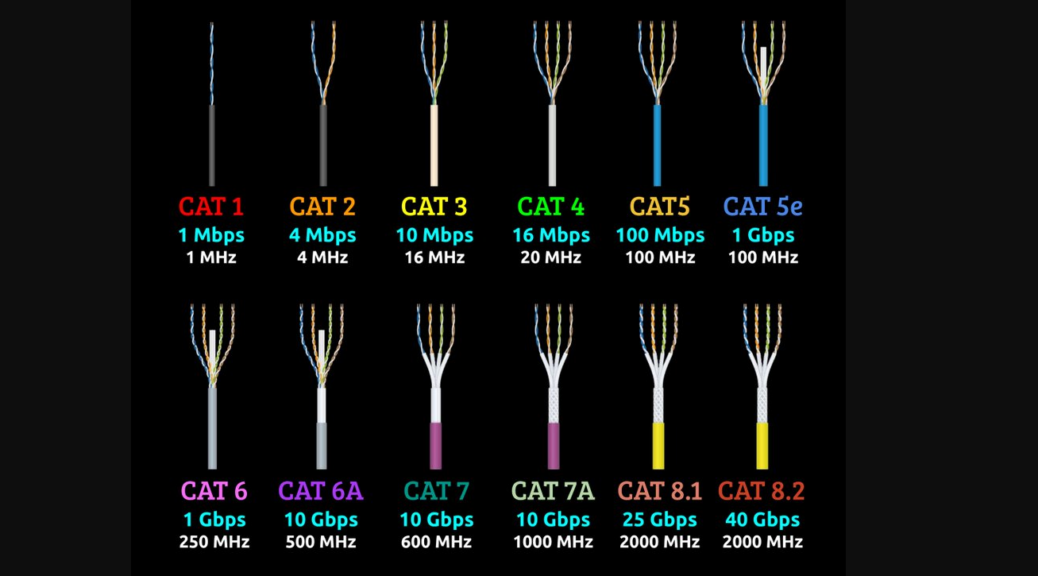I was flipping through X this morning, and came across a mind-boggling reminder that Ethernet networking has come a long way. You can see the chart from Dan Nanni (@xmodulo) as the lead-in graphic here. We’ve been planning our next move recently, and visiting a lot of new homes, so I can attest most builders are laying CAT 7 cable in such dwellings. But we’ve gone past 7 in categorizing Ethernet LAN cables, as a quick look at the chart will reveal. In fact, CAT 8.2 catches up with current top speeds for USB4 (but 80 Gbps is coming, probably next year).
Categorizing Ethernet LAN Cables Is Only Part
…of a more complicated picture. As I look around at PCs, switches, and so forth, I’m seeing a long tail of networking capabilities. When I see new PCs with RJ-45 ports, for example, I seldom see more than 2.5 Gbps interfaces. 10 Gbps is common on servers, but not on end-user gear.
We’re planning to move in 2026 or 2027, once son Gregory puts his university days behind him (planning on a 2-year Master’s to follow his BA). When we do that I’ll upgrade the infrastructure to support 2.5 Gbps. I see that 8-port 2.5 Gbps switches cost from US$60-100 nowadays. I’ll need to buy a bunch of CAT 7 cables, though: the higest-rated ones I see around here are CAT 6 (though it’s possible I’ve got some 6A shorties here or there).
Copilot puts the CAT timeline out as follows:
- CAT 6: early 2000s [max: 1 Gbps]
- CAT 6a: 2008 [max: 10 Gbps]
- CAT 7 & 7a: 2010 [max: 10/40 Gbps]
- CAT 8.1 & 8.2: 2016 [max: 25/40 Gbps]
Methinks there may some some limited need for 10 Gbps home networking, but not much above that speed. Speeds over 10 Gbps are generally limited to 30 m runs on TP cable, so they’re of limited utility in home spaces as well. Wonder how long it will take for these limits to evaporate? I hope to live long enough to find out.

This article provides a clear and informative breakdown of the different categories of Ethernet LAN cables, helping readers understand the nuances between Cat5, Cat6, and Cat7 cables, among others. The detailed explanation of their respective capabilities, including speed, bandwidth, and use cases, is particularly helpful for anyone looking to choose the right cable for their network setup. The emphasis on future-proofing and choosing cables that can handle emerging technologies is an important consideration in today’s fast-evolving tech landscape. Overall, this guide offers valuable insights that will aid both home users and IT professionals in making informed decisions. Great job, Ed Tittel, for such a comprehensive and accessible resource!
It’s great to see how Ethernet LAN cables have evolved over time! The detailed breakdown of CAT cables helps me understand what each category offers, especially for future-proofing home networks.
The shift to higher speeds like CAT 8.1 and CAT 8.2 is impressive. It’ll be interesting to see how quickly this new technology becomes standard for everyday users.
I like the comparison between home networking needs and data center setups. It shows that most of us don’t need super high-speed cables just yet.
I agree, but I’m going to wire my next house for 2.5 Gbps with appropriate WAPs and routers to see what happens anyway. No need for 10 Gbps or higher at home, though — I agree.
–Ed–